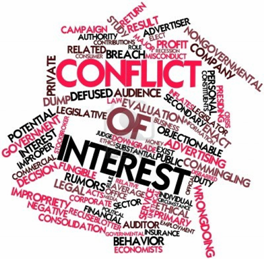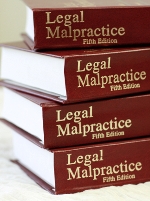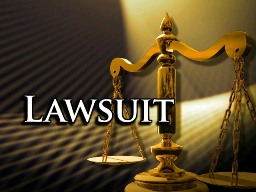 Texas Lawyer reported that an entrepre-neur who sued a venture capital firm for defrauding him out of his company, has amended his complaint to add a legal malpractice claim against the law firm that represented him, AmLaw 200 member Andrews Kurth.
Texas Lawyer reported that an entrepre-neur who sued a venture capital firm for defrauding him out of his company, has amended his complaint to add a legal malpractice claim against the law firm that represented him, AmLaw 200 member Andrews Kurth.
Kyle Samani co-founded Pristine Eyesight in 2013, to use Google glass to deliver a video communication platform, primarily for health care providers. It changed its name to Pristine, and its focus to enabling field workers, i.e., inspectors, technicians, process engineers, claims adjusters, etc., to col-laborate with remote colleagues via video communication.
Samani alleges that Pristine hired Andrews Kurth to prepare a financing agreement be-tween it and venture capital investor S3 Ventures, which along with two other venture capital firms, invested $5.4 in the company in 2014. The other firms aren’t named in the suit, but a sister company of S3, and two S3 executives, who also invested in Pristine, are named in the suit.
However, while “Andrews Kurth purported to represent (Pristine’s) interests”, it actually represented “S3’s interests to the detriment of Kyle Samani”.
Samani claims that an Andrews Kurth lawyer who drafted the financing agreement told him, “‘I am about to send you a bunch of documents. It is my job to read them, so you should probably just go through and docusign them.'”
He states that he took that lawyer’s advice, not realizing – because it was never ex-plained to him – that Andrews Kurth was representing only Pristine, and not him per-sonally.
He alleges that a year later, after S3, its sister company, and its executives who had invested in Pristine, learned that some of its shares had traded privately for $1.20 a share, and that the company was on the verge of closing several more large sales con-tracts, they terminated him as CEO, “claimed the right to force a sale of (his) roughly 700,000 unvested shares in Pristine for $0.01 each”, and barred him from participating in governance of the company, even though he’s a member of its board.
The defendants allegedly bought his 700,000 shares for $7,000, even though they had a market value of more than $1 million.
“After the financing agreement was executed, the same one he was instructed not to read,…Mr. Samani was stripped of his job without cause, and stripped of his ownership of the company without compensation.”
Samani alleges that Andrews Kurth placed S3’s interests ahead of his interests, advised him not to read important documents before signing them, and failed to advise him of:
- Obvious conflicts between S3 Ventures, its employees and the firm;
- The conflict of interest between him and Pristine;
- That he should hire his own counsel before signing the financing agreement;
- His potential downside in the financing agreement.
Lessons:
Law Practice Risk Management:
I. Conflict of Interest
A. According to the Texas Lawyer article, Samani claims that Andrews Kurth (AK) “had a long relationship with S3, providing legal work to a number of S3 portfolio com-panies”, which is presumably the basis of his allegation that there were “obvious conflicts” between AK and S3.
However, Samani doesn’t allege that AK represented S3 in this matter, so there was no violation of Texas Disciplinary Rules of Professional Conduct Rule 1.06. Conflict of In-terest: General Rule, which prohibits a lawyer from representing opposing parties to the same litigation, or representing a person if it:
(1) involves a substantially related matter in which that person’s interests are materially and directly adverse to the interests of another client of the lawyer…; or
(2) reasonably appears to be or become adversely limited by the lawyer’s or law firm’s responsibilities to another client or to a third person or by the lawyer’s or law firm’s own interests.
Samani will likely be unable to prove this allegation, because a lawyer is not precluded from representing a party in a matter, just because it once represented the other party or its partners, especially when the present representation is non-adversarial, as this one was.
B. Samani alleges that AK failed to inform him of the conflict between himself and Pris-tine.
Rule 1.12. Organization as a Client states:
(a) A lawyer employed or retained by an organization represents the entity…
Section (e) states:
(e) In dealing with an organization’s directors, officers, employees, members, share-holders or other constituents, a lawyer shall explain the identity of the client when it is apparent that the organization’s interests are adverse to those of the constituents with whom the lawyer is dealing or when explanation appears reasonably necessary to avoid misunderstanding on their part. (Emphasis added)
Further, Comment 4 to Rule 1.12 states
4. …when the organization’s interest (becomes) adverse to those of one or more of its constituents…the lawyers should advise any constituent whose interest the lawyer finds adverse to that of the organization of the conflict… (and) that the lawyer cannot repre-sent such constituent, and that such person may wish to obtain independent represent-ation. Care should be taken to assure that the individual understands…the lawyer for the organization cannot provide legal representation for that constituent individual…(Emphasis added)
Here, Samani may have a stronger case, because in his role as Pristine’s CEO, he app-arently hired AK, was its primary contact, and approved payment of its bills, but claims to have been was unaware that AK represented only Pristine, but not him personally. As co-founder of the firm, its CEO, and a major, if not majority stockholder, he probably saw no distinction between himself and Pristine.
If AK informed him in writing at the start of its representation of Pristine, that it wasn’t also representing him personally, then it will likely prevail, but if it didn’t, it should have, if not at the start, then after it prepared the financing agreement, which while presumably in Pristine’s best interests, may have been “adverse to those of the organization’s constit-uents with whom the lawyer is dealing”, i.e., Samani.
Finally, Comment 5 to Rule 1.12 states in part:
5. A lawyer representing an organization may, of course, also represent any of its di-rectors, officers, employees, members, shareholders, or other constituents…
It’s unclear why AK didn’t represent Samani, as it doesn’t appear that representing both him and Pristine would have been adverse to either one. However, it would have been adverse to S3, because AK would have been obligated to advise Samani not to sign a financing agreement that gave S3 “the right to force a sale of (Samani’s) roughly 700,000 unvested shares in Pristine for $0.01 each”, which Samani alleges was well-below their market value.
Samani’s counsel will likely try to prove that AK didn’t represent Samani in order to aid S3. If he succeeds, then AK may face a potentially large judgment, and punitive dam-ages.
AK should have either represented both Samani and Pristine, or advised Samani to ob-tain his own counsel. The onus is on the law firm to clarify which party it is – and isn’t – representing, so if AK failed to do so, it may be found to have committed malpractice.
Will a jury of Kyle Samani’s peers – which will include small business owners, if his attorneys are adept at jury selection – believe him if he testifies that he thought AK was representing both himself and Pristine, the company he co-founded and led? Al-most certainly yes.
II. Engagement Letter
If AK produces a properly drafted engagement letter signed by Samani, then it will almost certainly prevail, perhaps via summary judgment. However, based on the com-plaint, it appears that AK either didn’t send Samani an engagement letter, or did, but didn’t require him to sign and return it, before it began work on the financing agreement.
If true, that was a mistake, because an engagement letter may have eliminated any confusion by Samani: according to legal malpractice insurer the Bar Plan, a properly drafted engagement letter will “clearly define” the “client, scope, subject matter and goals of the representation.”, disclose any potential conflict of interest, and set forth “the client’s right to independent counsel”.
Just as a kingdom was lost for want of a nail, Andrews Kurth may find that a legal malpractice claim was lost for want of an engagement letter.
Further reading:
Pristine Inc. co-founder sues S3 Ventures LLC alleging unjust termination – Austin Business Journal
Tech Lawyer Analyzes Kyle Samani’s Case





